A guide to visiting the archaeological site of Akrotiri, Santorini – how to take a day trip to this fascinating ancient Minoan city, known as Greece’s version of Pompeii after it was buried by an earthquake.
* This site contains affiliate links, where I get a small commission from purchases at no extra cost to you.

It might seem like the island of Santorini in Greece is wall-to-wall whitewashed villages, caldera views and sublime sunsets. But head south of the famous Oia and Fira and you’ll find a different type of Greek settlement – the ruined city of Akrotiri, Santorini.
Or at least that’s what it’s known as now. It was christened Akrotiri after the nearby modern town of the same name, but its original name is just one of its mysteries. Nicknamed Santorini’s Pompeii, it’s similar in that both cities are important archaeological sites buried by a volcanic eruption, but there are a few big differences between them.

The history of Akrotiri, Santorini
The first difference between Pompeii and Akrotiri archaeological site is their age. Pompeii was founded in 600 BC and destroyed when Mount Vesuvius erupted in 79 AD, but Akrotiri makes it look young. It was home to the ancient Minoans over 4000 years before Pompeii was founded, and has been preserved just as it would have been in 1500 BC.
Visiting Akrotiri is a window into the life of a distant people – and a different side of Santorini. Akrotiri started life as a simple fishing and farming village, growing olives and grains. But because it was positioned on the trade route between Europe and the Middle East, the money flowed in and it grew up into a big, prosperous port city.

Akrotiri was a democratic place though, which had its own parliament and no palaces. People lived in two- and three-storey houses which came with balconies, underfloor heating, hot and cold running water and some of the first indoor toilets.
The Minoan people decorated Akrotiri with elaborate painted frescoes, made their own wine and crafted furniture, pots and sculptures. Amazing when you think this was during the Bronze Age, when people in Britain were still living in huts and building stone circles. It’s even said that Akrotiri was Plato’s inspiration for the city of Atlantis.
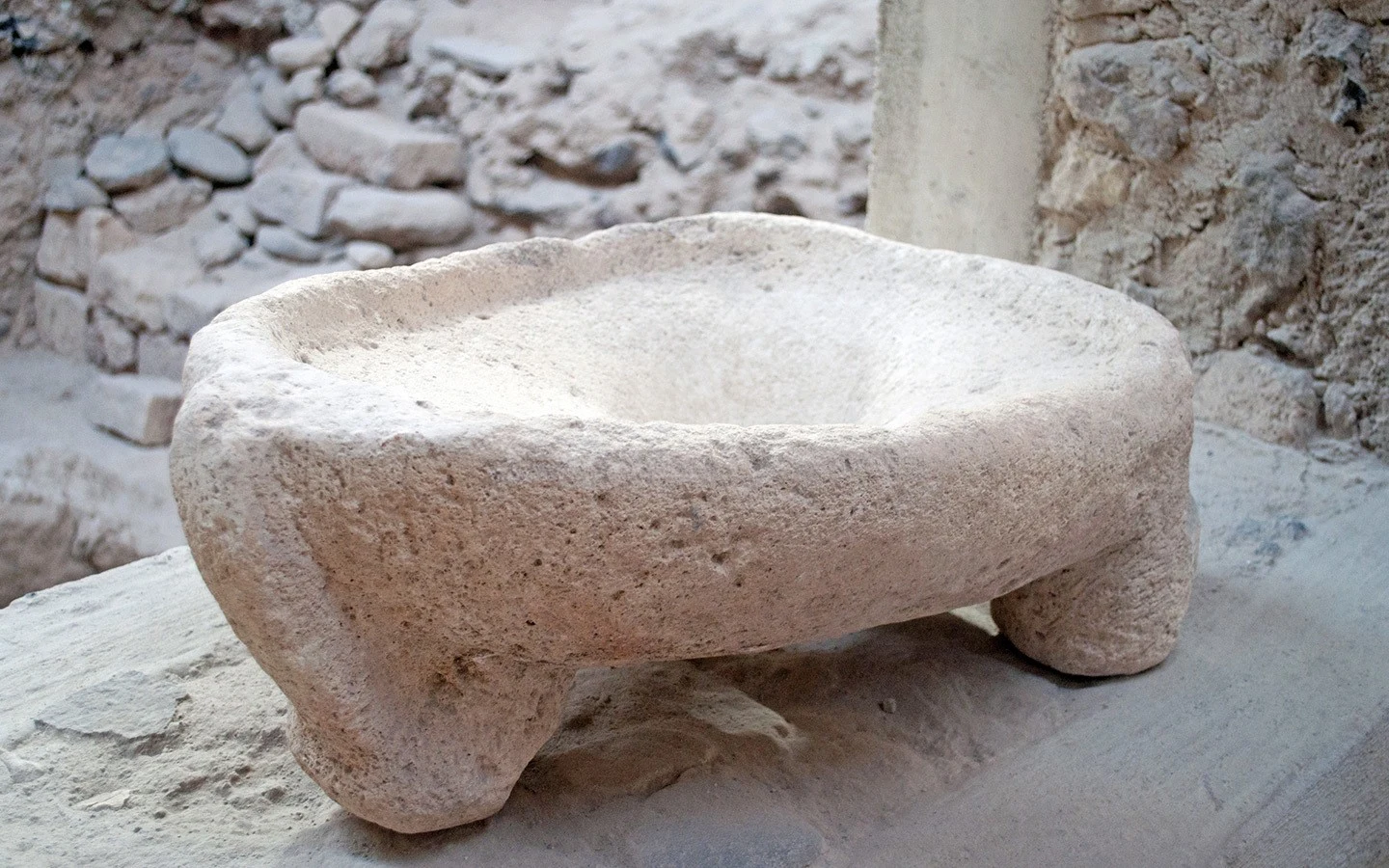
But somewhere between 1620 and 1530 BC, it all went wrong for Akrotiri when the huge volcano Thera erupted and blew the centre right out of the island of Santorini.
The eruption was one of the largest volcanic events ever recorded on Earth, creating a four-mile-wide caldera and sending up an ash cloud 20 miles high. It also set off a 100-metre-high tsunami that battered the coastline of Crete and reached as far as Egypt.
By the time the eruption had finished, Akrotiri had been buried beneath a 200-foot layer of ash and debris, and the shape of Santorini had been changed for good. The island was covered with a layer of hot lava and piles of ash, and was left abandoned for centuries.

Eventually Santorini was recolonised, with the Phoenicians, Dorians, Romans and Byzantines creating new settlements on the island. But the buried city of Akrotiri was forgotten about until the 1860s. Workers quarrying ash to build the Suez canal dug down and discovered artefacts from the old city. Some small-scale digs took place but the remains stayed where they were for another hundred years until excavations began in 1967.
Just a few hours into the excavation archaeologists discovered the first of Akrotiri’s historic buildings. Since then around 40 buildings have been identified but there’s a long way still to go. New finds are constantly being found and it’s estimated only a third of the city has been uncovered so far – and it could take another century to excavate it all.

Visiting Akrotiri, Santorini
Akrotiri archaeological site is open to visitors, set in a big, light and airy building. The ruins need to be covered up as the houses are made of mud bricks so would be damaged by water. But things were put on hold at the site in 2005 after the roof of the previous building collapsed and killed a British tourist, and it took seven years to repair and reopen the site.
There’s now a smart new building, made of steel and wood to let just enough light in but keep things cool and protected. Walkways are suspended above the ruins and take you around the edge of the city. But what’s ground level for us is roof height in Akrotiri.
The layer of ash covering the city was up to 40 metres thick in places so it has taken a lot of painstakingly digging and the removal of huge quantities of rock to get down to the original street level. A pathway leads down through some of the reconstructed houses, where you can see details like an original Minoan toilet and a stone bathtub.

During the excavations, remnants of people’s everyday lives were uncovered among the buildings, and they’re what makes the site so fascinating. The ash has perfectly preserved the Minoan way of life, from painted frescoes to hundreds of pots. These range from drinking cups up to giant storage vessels decorated with geometric patterns.
Many of the pots are amazingly still in tact, and some even had the remains of olive oil or fish left inside. You can see some artefacts at the site, but many others have been moved to the archaeological museum in Fira, and some of the best of Akrotiri’s frescoes are on display in Greece’s National Archaeological Museum in Athens.

Furniture like beds, chairs and tables have been recreated by pouring plaster into the casts made by the ash, like they did with people’s bodies in Pompeii. But the big difference at Akrotiri is that no human or animal remains have been found here.
It’s thought there were probably many foreshocks before the big eruption, so the Minoans of ancient Akrotiri had time to pack up their livestock and valuable belongings and leave the city – unlike in Pompeii where the eruption all happened so quickly.
As Akrotiri was a rich seafaring city, people had access to boats which made it easy for them to escape. Though where they went next and why they never came back to Santorini after the eruption is another of the many mysteries which surround Akrotiri.
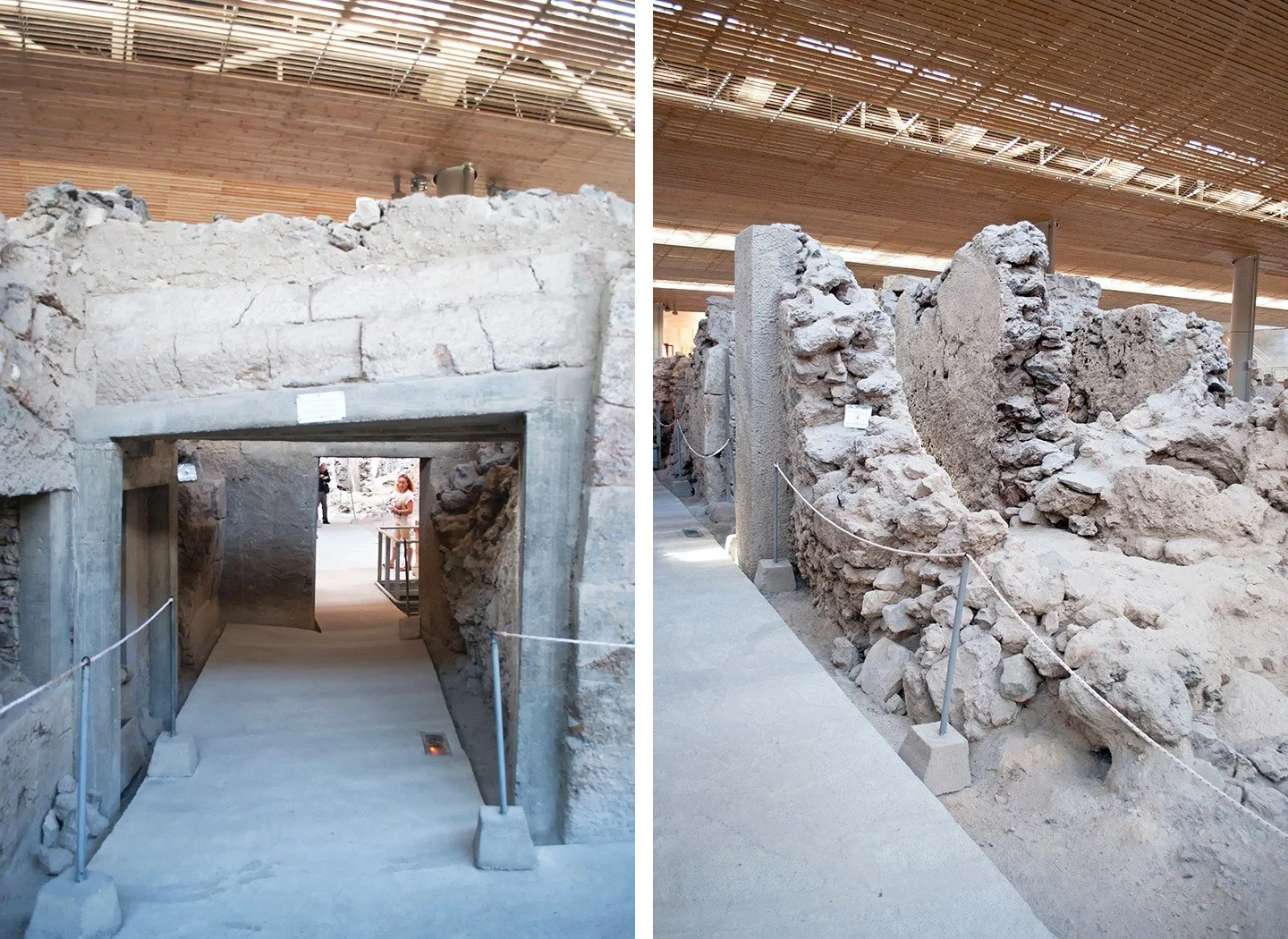
The details
How to get to Akrotiri
The ruins of Akrotiri make an easy Santorini day trip. They’re located in the south of the island, 20 minutes’ drive from Fira. If you don’t have a car there are hourly buses from Fira bus station to Akrotiri, which take around 25 minutes and cost €2 one way.
Or if you want to make things easy you can also book a bus tour* from Fira to the ruins and the Red Beach. The Red Beach (Kokkini Paralia) with its dramatic cliffs is only a short walk from Akrotiri archaeological site and is well worth adding onto your visit.
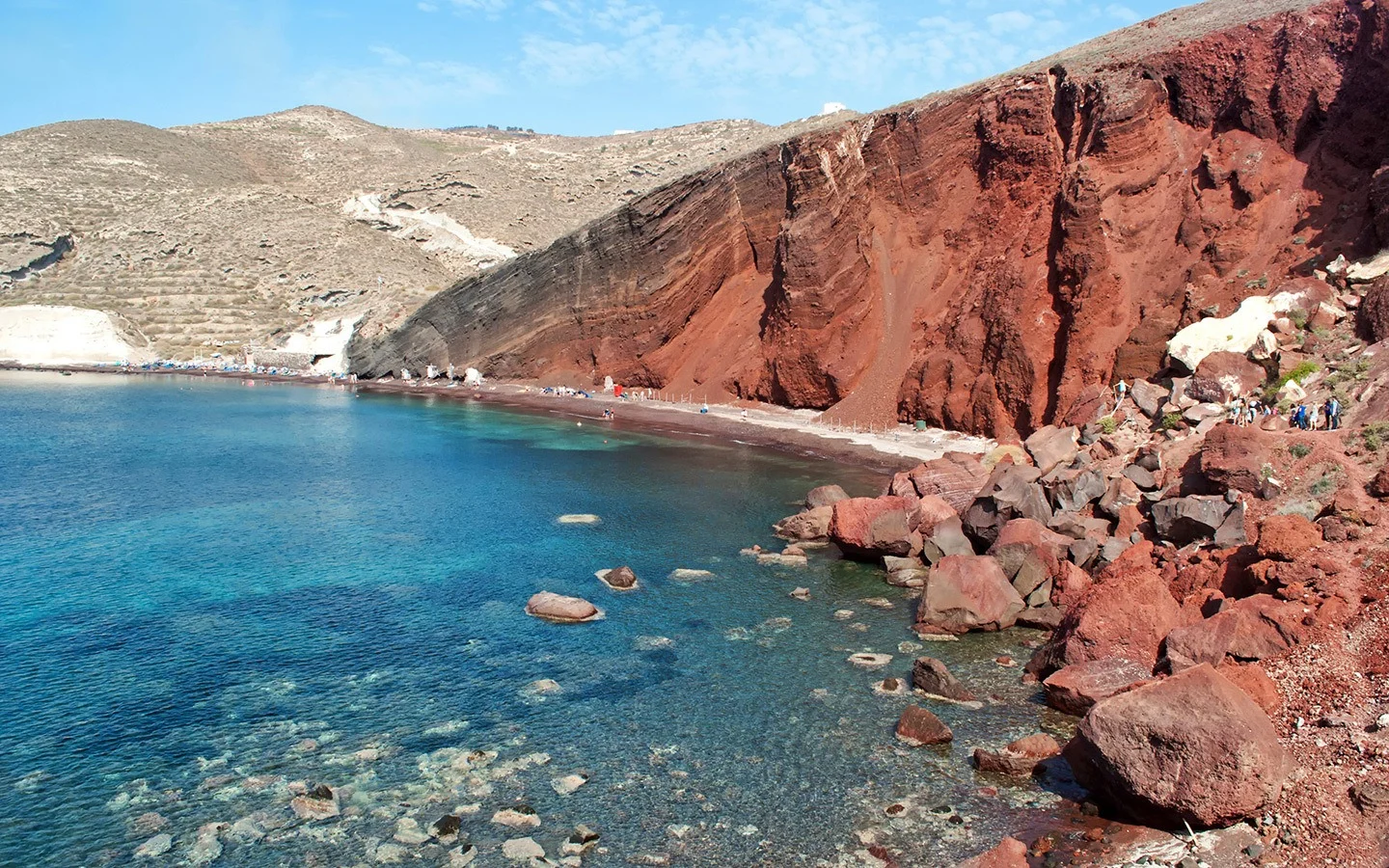
Visiting Akrotiri archaeological site
Entrance to Akrotiri costs €12 for adults or €6 for concessions (under 25s/EU citizens over 65). You can also get a three-day combined ticket which covers Akroiri, the Archaeological site of Ancient Thera and Museum of Prehistoric Thera for €15/€7.50.
Akrotiri archaeological site is normally open daily 8am–6pm from 1 April until 31 October. And for the rest of the year it’s open from 8.30am–3.30pm daily except Tuesdays.
There are a few information boards dotted around the site which give you some basic information about what you’re looking at. But if you want to get more of an insight into Akrotiri it’s worth hiring a guide – you can pre-book an hour-long private guided tour,* download an audio guide app, or there are usually guides waiting at the entrance.
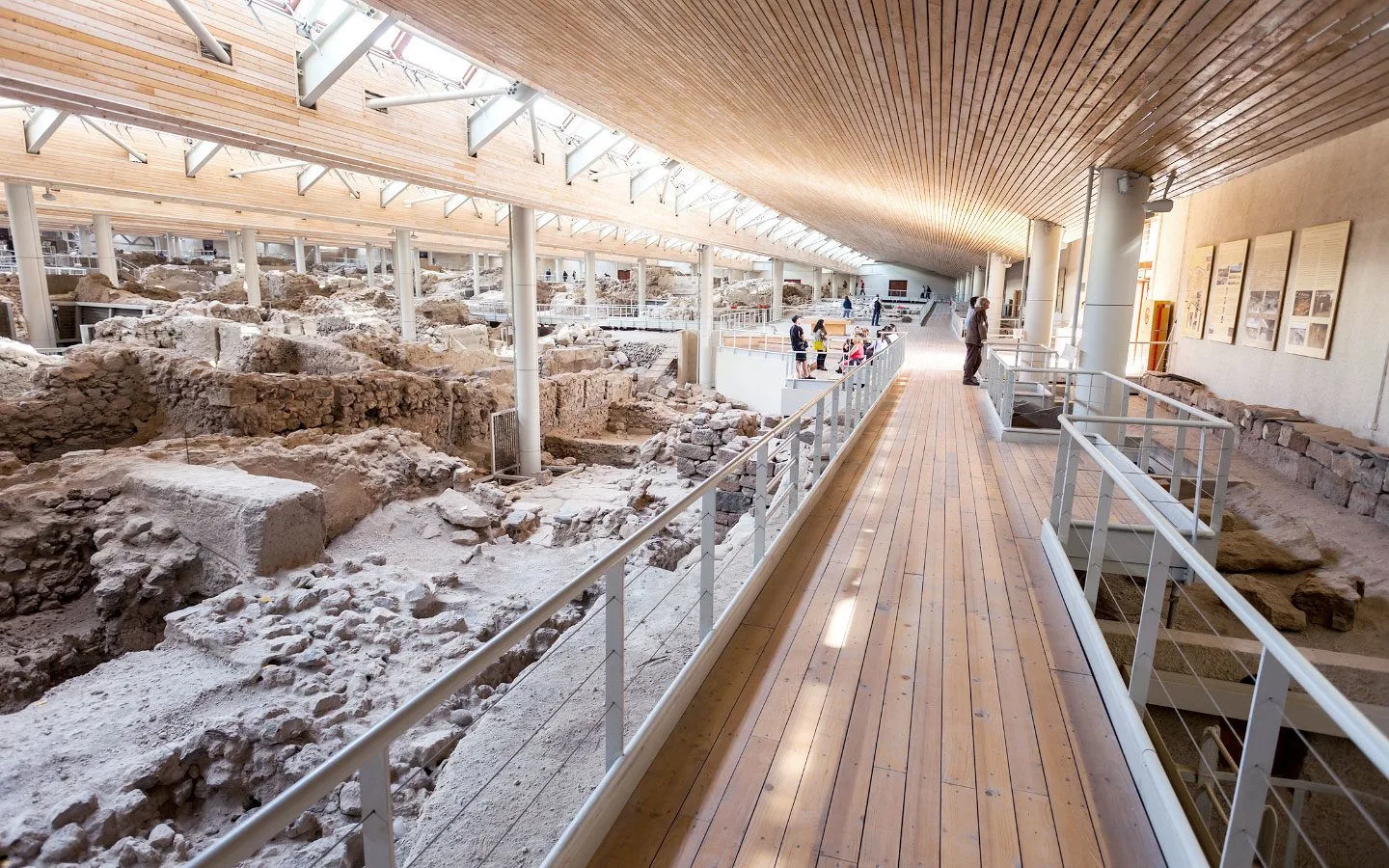

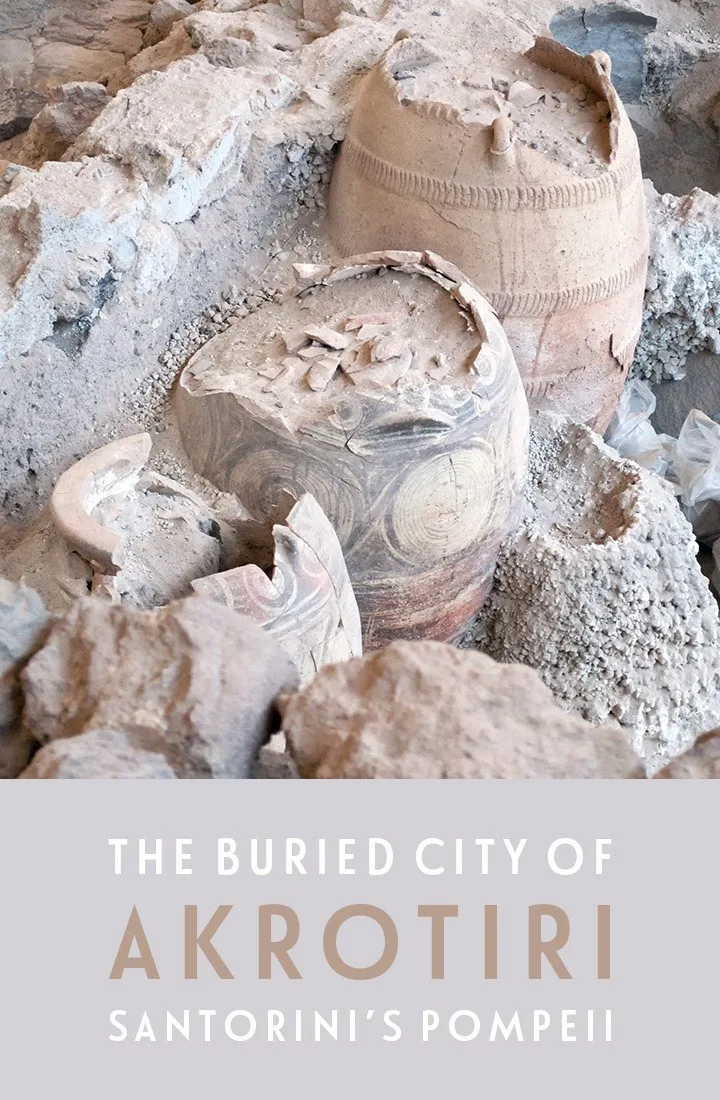



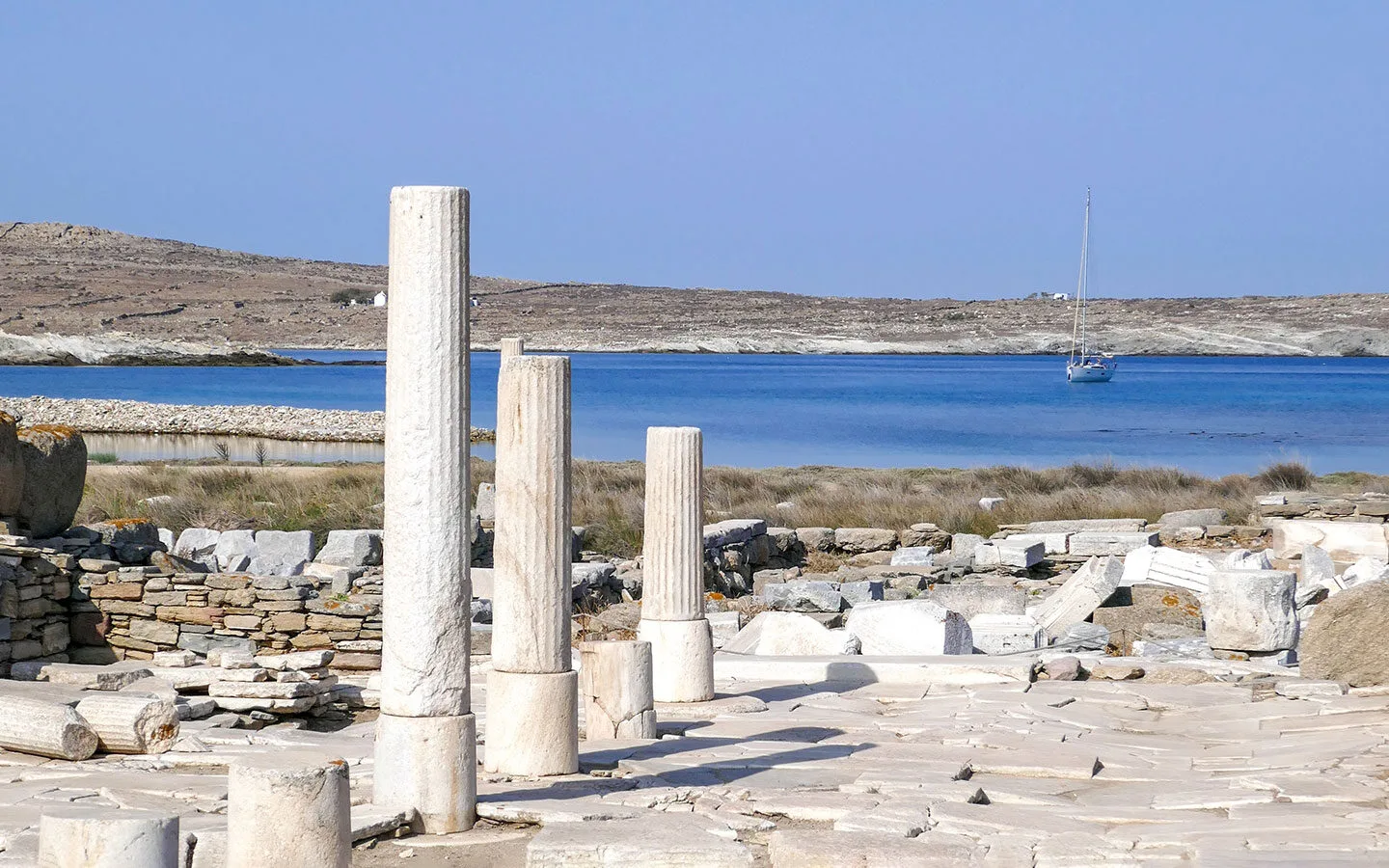
Wes
Sunday 30th of January 2022
Will be visiting Santorini this April-May and will be adding a visit to Akritori to our stay. Thank you for sharing information about this ancient city.
Lucy Dodsworth
Friday 18th of February 2022
You're welcome, have a wonderful trip!